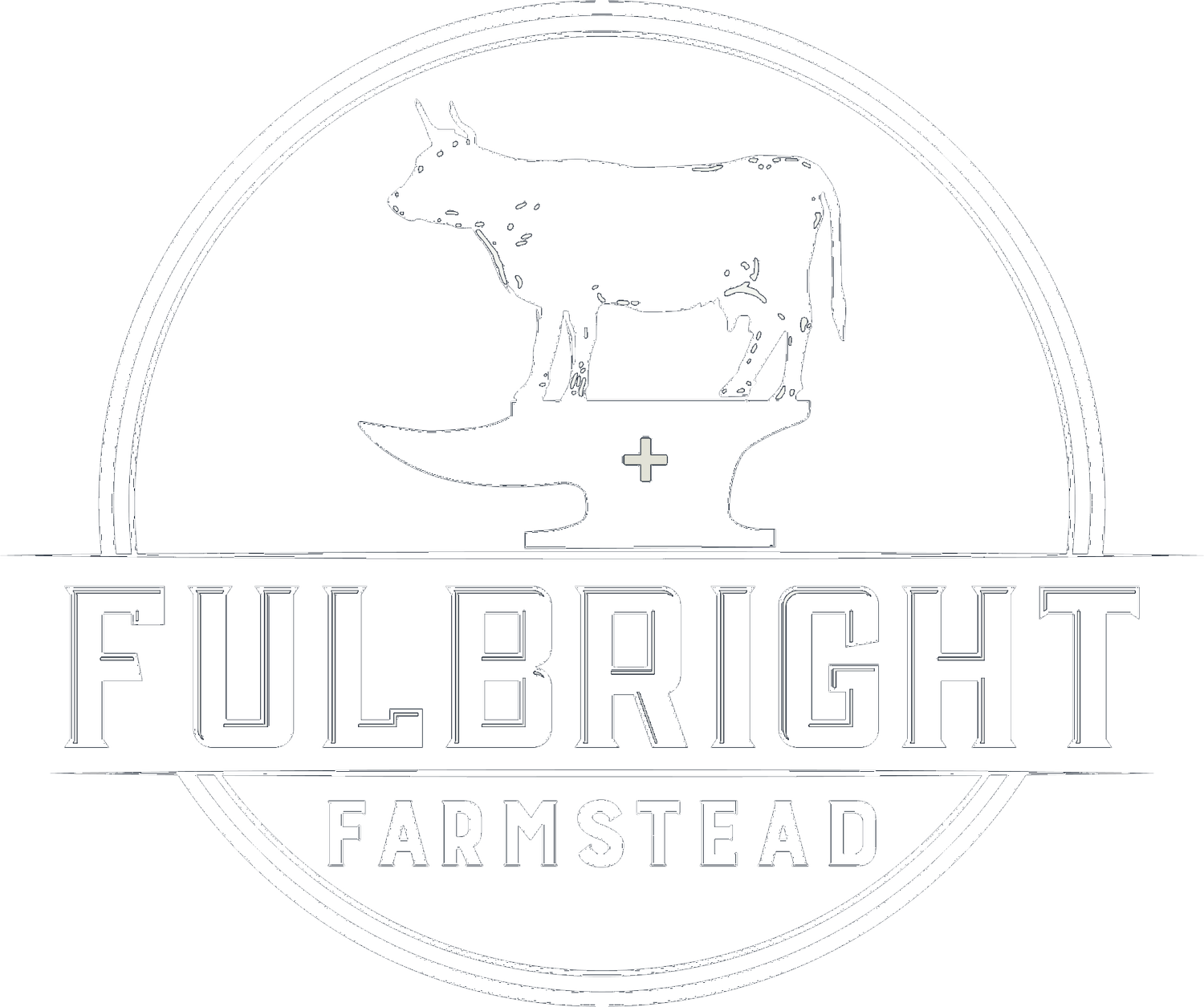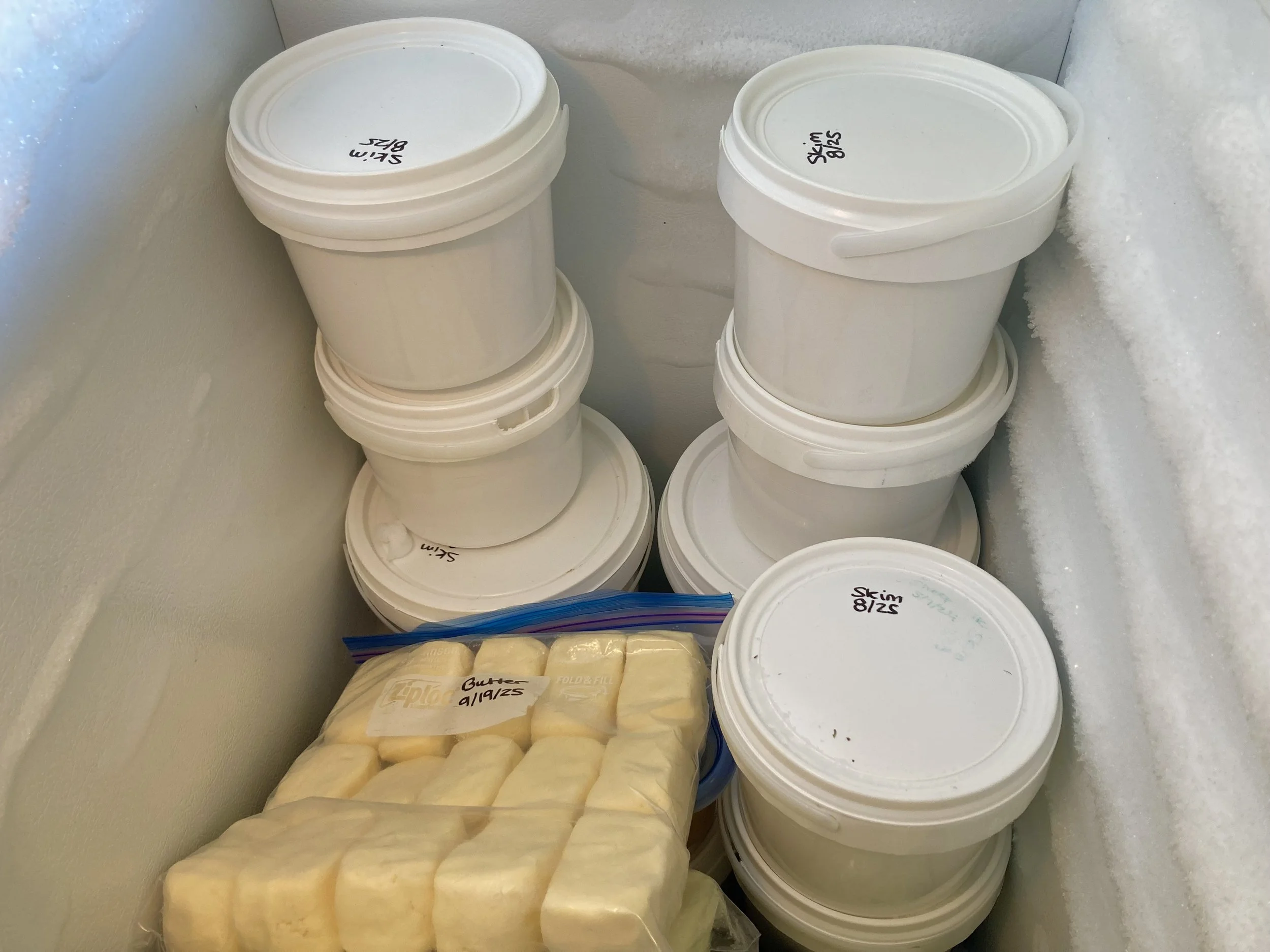Surviving the Dry Season: A Dairy Shepherd's Guide to Life Without Fresh Sheep Milk
If you've recently dried off your dairy ewes (or are about to), you might be experiencing a mix of emotions. Relief at having a break from the demanding milking routine, but also a bit of sadness knowing you won't have that incredible fresh sheep milk for a while. Trust me—I get it!
Hello, World!
Here's how I prepare for and survive the dry season without my beloved sheep milk.
The Emotional Rollercoaster
Let me be honest: when milking season ends, I feel both relief and sadness at the same time.
The Relief: I hand milk my ewes, so when the season ends, I get a break from all that hard work. No more milking dishes piling up in my sink. No more going outside in the cold to sort off my milkers in the evenings, then heading back out early in the morning to milk in the freezing temperatures. The daily routine lightens up considerably—I'm not constantly processing milk or juggling all those extra chores.
The Sadness: But here's the thing: I absolutely LOVE my sheep milk. I love it so much that it's ruined me for any other type of milk. I've gotten to the point where I can barely tolerate even good, raw cow's milk anymore. Sheep milk is just that good!
I miss the routine of milking my ewes every morning. I miss opening my fridge and seeing fresh milk waiting for me. I especially miss pouring that creamy, rich sheep milk into my coffee every morning. There's nothing quite like it.
Preparing for the Dry Season: Stock Up!
The key to surviving the dry season is planning ahead while you're still milking. Here's what I do:
Freeze, Freeze, Freeze
I freeze milk in two forms:
Whole sheep milk for drinking and special recipes
Skim milk specifically for cooking
My top tips for freezing milk successfully:
Chill it fast: Fresh milk needs to be chilled as quickly as possible. I use an ice water bath with a pump to circulate the water around my milk jars. This rapid chilling is crucial for milk quality. (Check out my blog post here about my milk chilling setup for details!)
Freeze the freshest milk possible: This is critical! If you freeze older milk, the cream will separate out and develop a weird texture when thawed. Only freeze milk that's at its peak freshness.
Leave headspace: Milk expands when frozen, so don't fill containers to the brim.
Make ALL The Cheese and Butter
My absolute favorite way to preserve milk is as cheese and butter. During the last few weeks of milking season, I go into production mode.
Cheeses I make sure to stock up on:
Mozzarella
Parmesan
Asiago
Colby
These are our family favorites, and having a good stash gets us through the winter with plenty to spare.
Butter: I make and freeze as much butter as I can. There's no substitute for real butter, and I make sure we never run out!
Surviving Without Fresh Milk
Once the dry season hits, here's how I manage:
What I Use
I cannot tolerate store-bought milk—it gives me stomach aches. So I rely entirely on my frozen milk until it runs out. Most of the time, if I've planned well, I save enough to last through the entire dry period.
For cooking, I use my frozen skim milk. It works perfectly in any recipe that calls for milk.
What I Avoid
I avoid recipes that call for heavy cream during the dry period since I don't keep any on hand. However, I've heard from other dairy shepherds that they've had success freezing just cream, so I might experiment with that sometime!
If I do run out of frozen milk (which rarely happens these days), I simply go without rather than buying store milk that makes me feel terrible.
My Current Setup: The Best of Both Worlds
I've recently changed my approach, and it's been a game-changer: Once my ewes are dry, I wean my calves and start milking my cows.
I milk my cows all winter to keep myself in fresh milk and cheese. Then I dry them off in preparation for their next calving right around the time my ewes lamb in the spring.
This setup means I have access to fresh milk year-round! While it's not quite the same as sheep milk (nothing is!), it keeps me from having to freeze as much sheep milk or stockpile quite as much butter and cheese.
The Silver Lining: Enjoying the Break
As much as I love milking season, there are some real benefits to the dry period.
More Time for Other Projects
Without the demanding milking routine, I have time to explore other hobbies and farm projects:
Wool Processing: Winter is my time to really dive into fiber work. I love spinning and working with the wool from my flock.
Reading and Learning: I use the quieter months to expand my knowledge. My winter reading list usually includes topics like:
Wool processing and fiber arts
Shepherding techniques
Sheep health and management
Advanced cheesemaking methods
Barn Prep: As spring approaches, I focus on getting the barn prepped and ready for lambing season. I take inventory of all my supplies and place orders for anything I might need.
Working with Ewe Lambs: Once my mature ewes are dry, I get to start working with my ewe lambs who'll be first-time milkers. This is really fun because it's a glimpse of the upcoming season—a preview of what's to come!
Rest and Recharge
I think of winter as my time to rest up for the big, busy season ahead. Spring brings lambs—which is tiring but one of my absolute favorite times of the year—followed by fresh milk again!
The Countdown Begins
I definitely countdown to lambing and milking season. There's something magical about anticipating those first lambs hitting the ground and knowing that fresh sheep milk is just around the corner.
Lessons Learned: My First Dry Season Mistakes
My first dry season, I made some rookie mistakes. The biggest one? I didn't freeze nearly enough milk or make enough cheese.
I underestimated how much we'd actually use and how much I'd miss having sheep milk on hand. I ran out way too early and spent the rest of the winter wishing I'd been more aggressive about preserving milk while I had it.
How much milk to freeze and how much cheese to make is ever-changing depending on your current situation. It takes a season or two to figure out your family's consumption patterns.
Tips for First-Time Dairy Shepherds Facing the Dry Season
If this is your first dry season, here's my advice:
Overestimate rather than underestimate how much preserved milk you'll need. You can always use extra cheese and butter, but running out is disappointing.
Experiment with preservation methods while you're still in peak milking season. Try freezing milk in different container sizes to see what works for your family's usage patterns. We like to freeze in 1 gallon ice cream buckets.
Keep good records of how much you froze and how long it lasted. This will help you plan better for next year.
Embrace the break! Yes, you'll miss fresh milk, but enjoy having fewer chores and more time for other projects.
Start planning for next season early. Use the dry period to research new cheese recipes, upgrade equipment, or improve your milking setup for next year.
Consider diversifying your dairy animals like I did. Having cows to milk during the sheep dry season has been fantastic, though it does mean I'm milking something year-round!
Final Thoughts
The dry season is bittersweet for any dairy shepherd. You'll miss the fresh milk (oh, how you'll miss it!), but you'll also appreciate the break from the demanding routine.
The key is preparation: freeze plenty of milk, make lots of cheese and butter, and set yourself up to make it through the winter without running out of your precious sheep dairy products.
And remember—lambing season is always just around the corner, and with it comes a fresh supply of that incredible sheep milk we all love so much. The countdown is already on!
How do you prepare for and survive your dry season? Do you have any tips or tricks I didn't mention? Share them in the comments below!
Related Posts:
Pin for later


